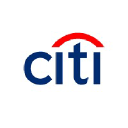Best Banks for Checking Accounts in November 2025

Chase Bank
- Extensive branch and ATM network
- No monthly service fee with direct deposit
- Option to earn cash back on purchases

Wells Fargo
- Extensive branch and ATM network
- User-friendly mobile app
- Overdraft protection feature

Citi Bank
- Broad ATM network
- No monthly service fees with qualified direct deposit
- Access to Citi’s ThankYou® Rewards program

Capital One 360
- No monthly fee
- No minimum balance requirement
- Access to a vast ATM network and online/mobile banking
In the world of personal finance, choosing the right checking account is crucial to managing your day-to-day transactions efficiently. With numerous banks offering a variety of features, making the right choice can be overwhelming. This guide will help you navigate the options and choose the best checking account that aligns with your needs.
What is a Checking Account?
A checking account is a type of bank account that allows easy access to your money for daily transactions. It’s a safe place to deposit and hold your money while providing the convenience of writing checks, using debit cards, and conducting electronic transfers. Checking accounts are essential for managing monthly expenses like paying bills, buying groceries, and other everyday financial activities.
Features to Consider When Choosing a Checking Account
When evaluating different checking accounts, it’s important to consider several aspects:
1. Fees and Charges
Many banks charge fees for maintaining a checking account. These can include monthly maintenance fees, ATM fees, overdraft fees, and more. Look for banks that offer low or no fees, or those that waive fees under specific conditions, such as maintaining a minimum balance or setting up direct deposits.
2. Accessibility and Convenience
Consider the bank’s branch and ATM network size. A bank with extensive physical locations and ATMs can save you money on out-of-network ATM fees and provide convenience when you need in-person assistance. Online and mobile banking features are equally important for managing your account on-the-go.
3. Interest Rates
Some checking accounts offer interest on your balance, allowing you to earn a small return on your funds. While the rates are typically lower than savings accounts, earning interest on your checking balance can be a nice perk. Compare the interest rates of different banks to find the best option for maximizing your earnings.
4. Account Requirements
Check the account requirements such as minimum balance, direct deposit mandates, and transaction limits. Ensure the account you choose aligns with your financial habits to avoid unnecessary fees and restrictions.
5. Customer Service
Evaluating the customer service of a bank is crucial, especially if you encounter issues with your account. Look for banks with strong customer reviews for their support and service options, including 24/7 customer service hotlines, chat support, and user-friendly online platforms.
6. Additional Features
Some banks offer additional perks such as cashback on debit card purchases, rewards programs, or discounts on other financial products. Explore these features to find added value in your checking account.
Security and Fraud Protection
When dealing with financial institutions, security is paramount. Ensure that the bank is FDIC insured, which means your deposits are protected up to $250,000. Additionally, look for features such as fraud alerts, secure login protections, and zero-liability policies on unauthorized transactions to protect your finances.
How to Choose the Right Checking Account
Choosing the right checking account involves evaluating your personal financial needs and lifestyle. Here are a few steps to guide you in making an informed decision:
-
Assess Your Banking Needs: Understand your primary banking activities, such as bill payments, cash withdrawals, and digital transactions, to identify what features you need in a checking account.
-
Compare Options: Research and compare checking accounts from different banks. Use online tools and reviews to narrow down your options based on fees, features, and customer satisfaction.
-
Consider Your Budget: Make sure the account requirements, such as minimum balance or fees, fit within your budget to avoid unnecessary charges.
-
Test Online and Mobile Services: If digital banking is important to you, evaluate the bank’s mobile app and online services for ease of use and reliability.
-
Read the Fine Print: Before opening an account, carefully read the terms and conditions to understand all fees, restrictions, and benefits.
In conclusion, finding the best bank for your checking account requires a careful examination of your financial needs and preferences. By considering factors such as fees, accessibility, and security, you can select a checking account that provides convenience and value. Always stay informed and proactive in managing your finances to maximize the benefits of your checking account.
